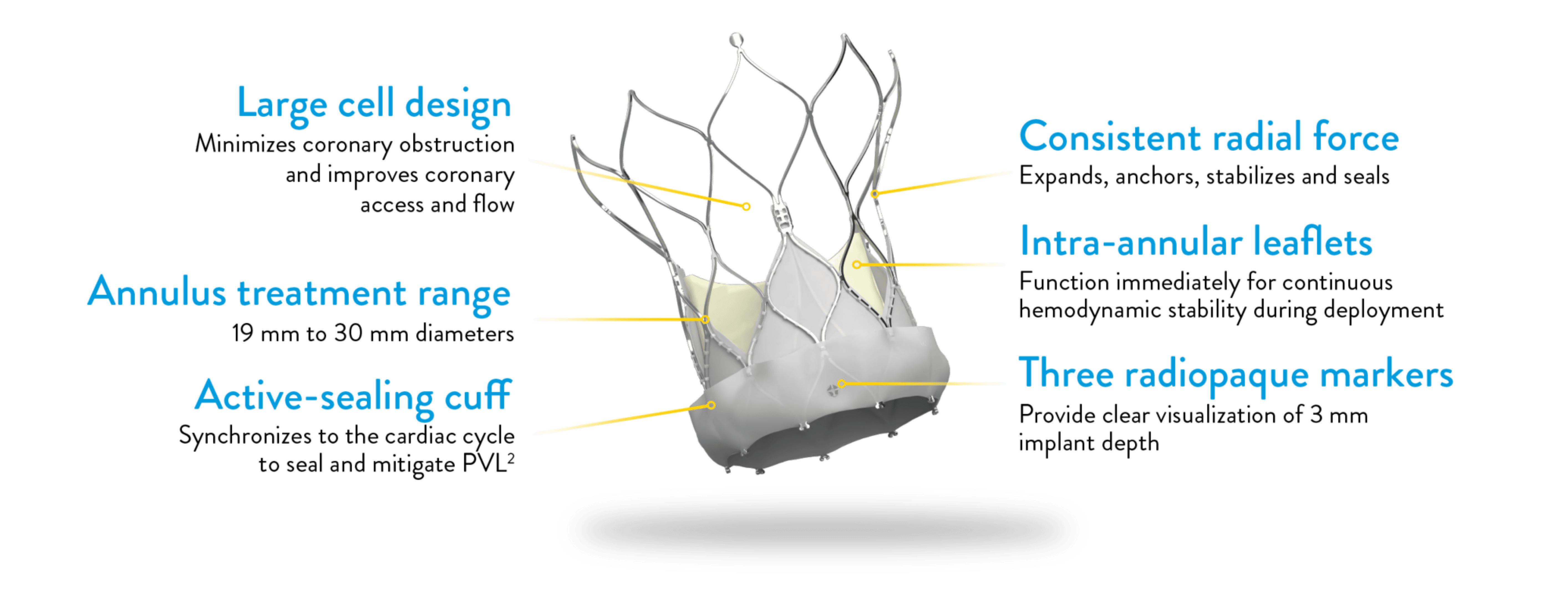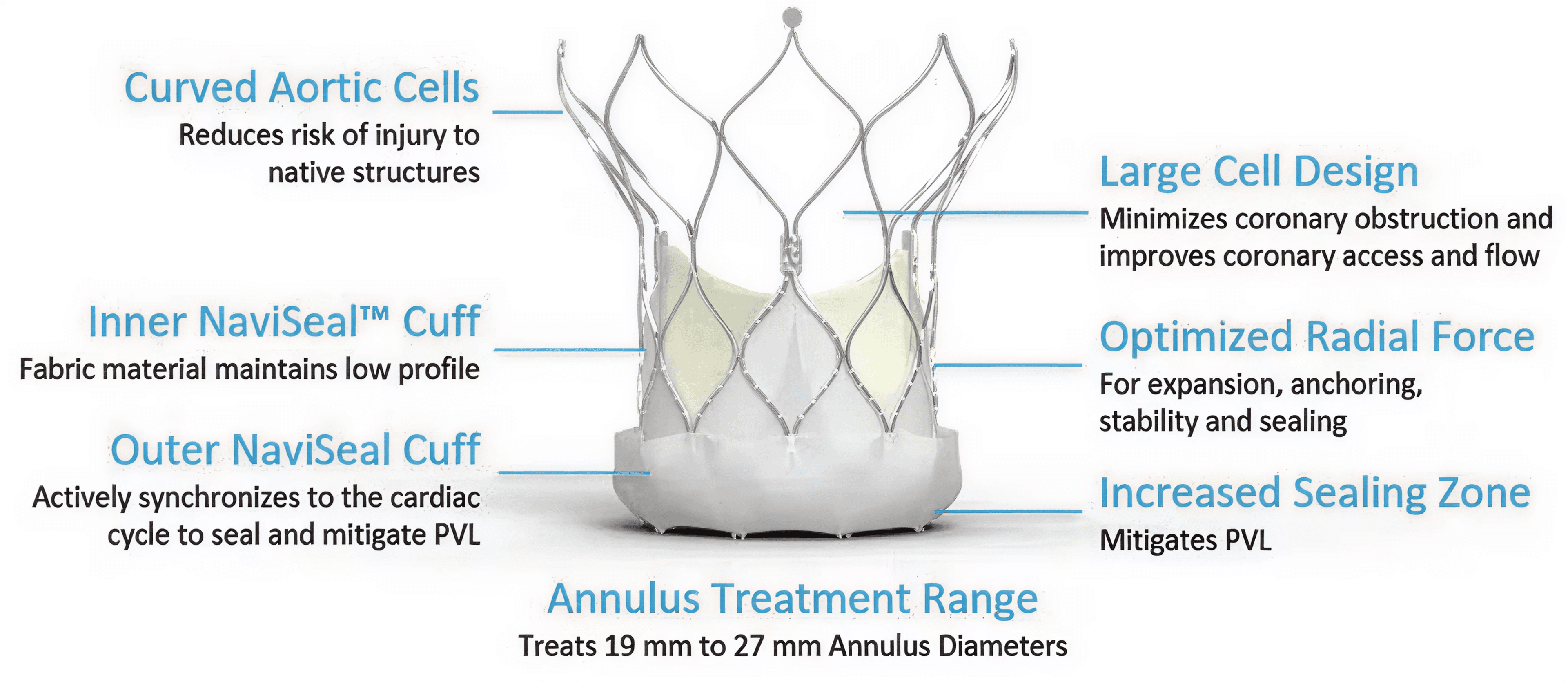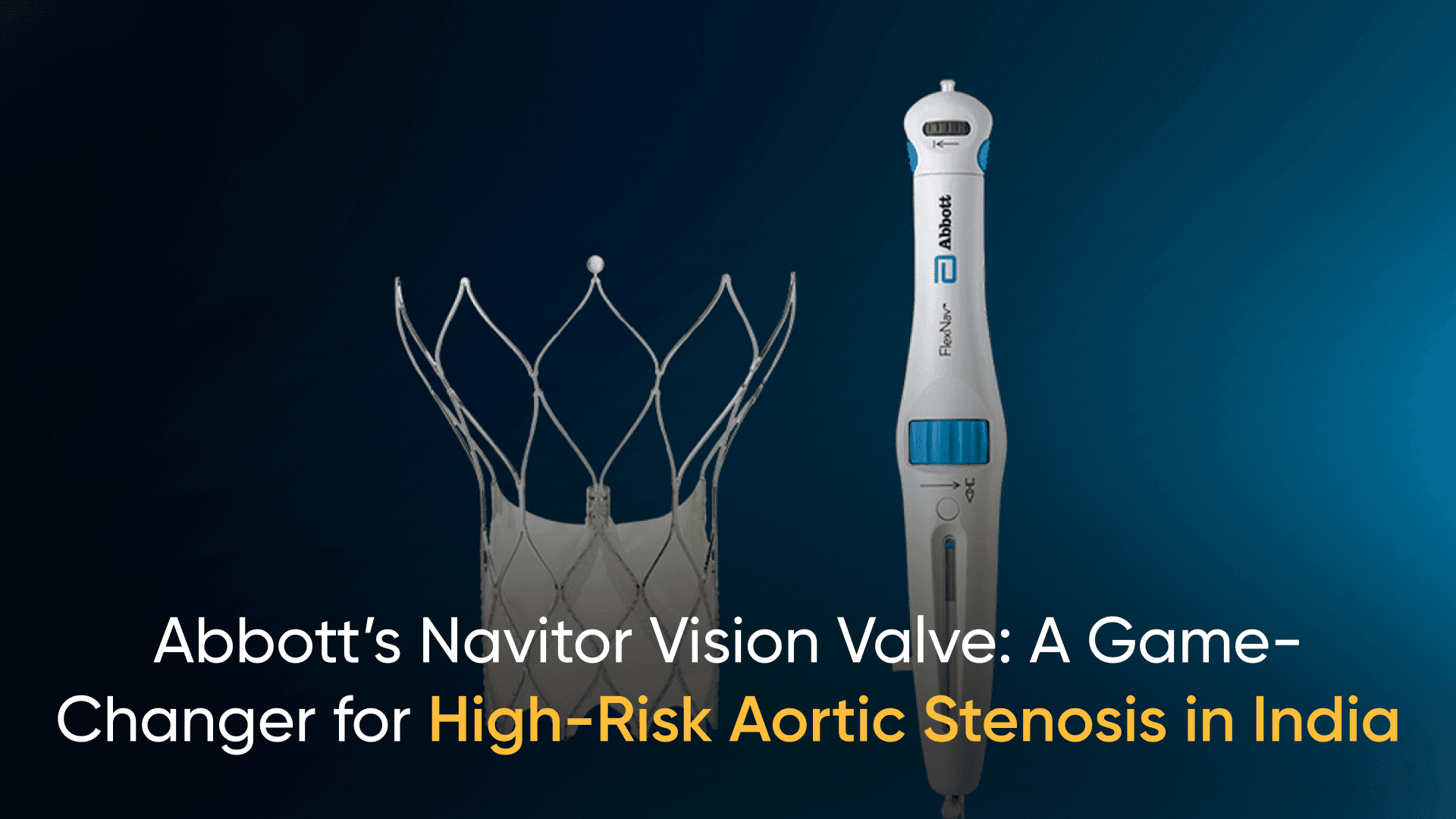In the ever-evolving landscape of cardiovascular healthcare, innovation is the key to advancing patient care and improving survival rates. The recent launch of Abbott’s Navitor Vision Valve in India marks a significant leap forward in the treatment of symptomatic severe aortic stenosis for high-risk patients. With the increasing burden of cardiovascular diseases in India, this breakthrough in transcatheter aortic valve implantation/replacement (TAVI/TAVR) presents an opportunity to transform how we approach heart valve disease.
The Imperative for Innovation in Aortic Stenosis Treatment
Aortic stenosis, a condition where the aortic valve narrows and restricts blood flow, disproportionately affects elderly patients or those with co-existing health conditions. Traditionally, surgical aortic valve replacement (SAVR) was the gold standard. However, for many high-risk patients, open-heart surgery is not a viable option due to age-related frailty, multiple comorbidities, or surgical complications.
This is where Navitor Vision Valve comes in, offering a less invasive, more precise, and patient-centric alternative through TAVI procedures. Abbott’s latest iteration of its transcatheter valve system is not just an incremental improvement but a revolution in visibility, precision, and accessibility in interventional cardiology.

Unmatched Visibility for Enhanced Precision
One of the defining innovations of the Navitor Vision Valve is its three large Vision markers, designed to enhance visibility during implantation. In TAVI procedures, precision is everything. Any deviation in placement can have critical consequences. These Vision markers provide real-time guidance to interventional cardiologists, ensuring accurate valve deployment and reducing procedural complications.
For a country like India, where access to highly specialized cardiac centers is limited to metropolitan hubs, technological advancements that improve procedural efficiency can make lifesaving treatments more accessible to a broader patient population.
A Dynamic Sealing Cuff for Optimal Performance
Beyond precision, Navitor Vision Valve’s dynamic sealing cuff is designed to minimize paravalvular leak (PVL)—a common post-TAVI concern where blood leaks around the prosthetic valve. By ensuring a secure fit across annulus sizes ranging from 19 mm to 27 mm, this feature not only enhances procedural success but also improves long-term clinical outcomes.

The Role of Abbott’s FlexNav Delivery System
The success of any transcatheter valve technology is only as good as its delivery system. The FlexNav catheter, a crucial component of the Navitor Vision Valve, enables stable, controlled, and seamless implantation even in patients with complex aortic anatomies. Designed for blood vessels as small as 5.0 mm, it significantly expands the eligible patient pool, ensuring that even those with challenging vascular access can benefit from TAVI.
Clinical Evidence Supports Superior Outcomes
Navitor’s clinical backing reinforces its efficacy, with data showing:
Low mean pressure gradients, ensuring minimal resistance to blood flow.
A large valve opening area, promoting efficient circulation.
Optimized coronary access, allowing for future coronary interventions without complications.
For India’s growing elderly population and the increasing prevalence of lifestyle-driven heart diseases, access to cutting-edge, clinically validated technology is essential for improving patient longevity and quality of life.
The Future of TAVI in India
The launch of Navitor Vision Valve in India is more than a product introduction—it’s a statement on the future of interventional cardiology in the country. As healthcare leaders, we must ensure that technological advancements do not remain confined to elite medical centers but permeate across India’s healthcare ecosystem.
The rapid adoption of TAVI over SAVR is inevitable as more clinicians recognize its benefits. However, for its full potential to be realized, partnerships between government agencies, private healthcare institutions, and industry pioneers like Abbott must focus on:
Expanding training programs for interventional cardiologists to optimize TAVI procedural efficiency.
Enhancing infrastructure in secondary and tertiary hospitals to make minimally invasive cardiac interventions more widely available.
Streamlining reimbursement policies to ensure affordability for patients in need.
Redefining Cardiac Care in India
Abbott’s Navitor Vision Valve is a landmark innovation in the Indian cardiac care landscape, delivering precision, safety, and accessibility in TAVI procedures. As healthcare stakeholders, we must embrace these advancements, ensuring that every high-risk patient, regardless of geography or socioeconomic status, has access to cutting-edge treatments that can save lives.
The path forward is clear—innovation, collaboration, and patient-centric care must drive the future of cardiac interventions in India. The launch of Navitor Vision is a defining step in that direction, bridging the gap between technological advancement and real-world impact.



